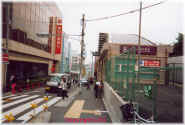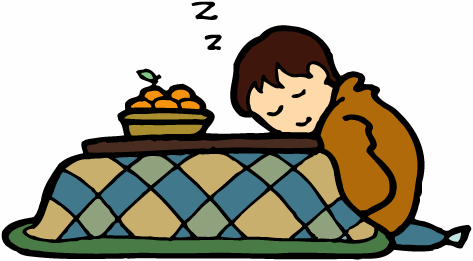|
Culture
This section is broken up into six parts:
|
|
Introduction
Japanese culture stretches back to at least 300 BC (JOMON PERIOD). This early culture was influenced by Siberia to the north and from the south, Southeast Asia. It is quite difficult to understand Japanese culture until you realize four important points about its make-up. 1. Japanese culture has many layers, old and new, foreign and native. This is fairly clear if you think about clothing, food and housing. Japanese people have always shown an interest for things outside of Japan and taken the best of them and incorporated them into their culture. 2. Japanese are homogeneous people. Culture varies very little throughout the country. The reasons for this are perhaps the large population living on a small area of habitable land and Japan has been ruled for centuries by a central government, which strictly controlled everyone's lives. The group plays a very important part in all Japanese lives with individualism shunned. 3. Japanese make foreign culture their own. Japanese kana characters were formed from more complex Chinese characters, before 900 AD (Heian Period). Kamakura Buddhism was introduced to Japan in the 6th century. Japanization stretches across the whole culture. 4. Japanese are a very pragmatic people, dealing with specific points rather than a wider truth. This has hampered those scientists who apply themselves to research, and Japanese are sometimes criticized for their lack of imagination. Japanese themselves do not understand why most things should be "black and white" as we in the West tend to think. Bearing the above points in mind I will try to explain clearly, some of the different elements that make up the culture in Japan. |
|
A Typical Tokyo Street Housing The climate and the customs of Japan, dictated to a large degree on the design of traditional architecture. Traditional style houses have good ventilation, with Tatami mats allowing a good air flow throughout the house. This is vital during the hot humid Japanese summers and a curse during the cold winters. Tatami mats came into common use at the end of the Muromachi period and the now traditional alcoves (tokonoma) and paper sliding doors (fusuma) in the Azuchi Momoyama period. Tiled slanting roofs are another common feature. Thatch roofs with long over hangs are common in areas with heavy snow falls in the winter. Timber has been the common building materials with lath and plaster walls. Traditional building methods can still be witnessed in Japan. Very often, before construction begins, a Shinto priest may hold a ceremony to purify the building site. Another ceremony may be held once the frame for the new house has been erected, leaving Sake and rice cakes on one of the joists. I have been told that this custom varies from area to area. A Rural City (Mito City Ibaraki Prefecture)
Winter in a Japanese house can be a very cold experience, if you are used to central heating (as I was). The walls are thin and not insulated against the cold, also as I have mentioned houses are well ventilated, letting cold drafts blow through unabated. Traditional and often modern housing doesn't have a central heating system, instead households usually rely on kerosene heaters. The modern ones are pretty effective, but have to be stopped once every few hours, to allow for any carbon monoxide built up to dissipate.
My favorite type of heating device is the Kotatsu. A Kotatsu is a low table with an electric heater fixed underneath and a thick quilt cover placed under the table top that hangs on all four sides to the Tatami mat. This is a very cozy way in which to eat dinner, accompanied by a warm cup of Sake. It is also very convenient if one has guests and one of them passes out, from to much Sake, he can be safely left in the Kotatsu for the night, without freezing to death. Traditional style houses used charcoal in a small charcoal burner placed in a square well beneath the floor, with the Kotatsu and quilt covering the well. This is more comfortable, as it allows you to put your legs down into the well and not fold your legs under yourself, as in the modern type. Western style housing is becoming more and more popular, with imported houses from U.S. and Canada increasing. The young generations of Japanese are looking for comfort (and fashion?) rather than tradition, with one room covered with traditional Tatami mats and the other rooms with wooden or carpeted flooring. Concrete and synthetic materials are replacing wood constructed housing. Few young people, compared with these in the West, can afford to buy a house. Housing prices range from \30 million in the countryside to over 90 million Yen in Tokyo. Land prices across Japan have been falling in recent years, but still out of the range of most people, especially if you consider that the average Japanese house will last for about 40 years, nearly the same time it would take to pay for the mortgage. Many people opt for buying a condominium type apartment, Mansion, with prices in the 40 million Yen range in Tokyo, but the ongoing recession has hit that market hard, with many empty new high rise apartments, left unsold or being put on the market at reduced prices. Tokyo Scene
Nowadays western style toilets are common. But some rest rooms still have the Japanese style flushable toilet, whereby you have to squat down and not sit on it. These can be often found in the countryside. I was a little horrified once, when I was visiting someone outside of Tokyo, and had to use the toilet, to discover, not only was it a Japanese style lavatory, but I could look down through the hole into the cesspit! Needless to say I had to hold my nose with my left hand. This is not such a common sight anymore, some trains and public rest rooms still use Japanese style flushable toilets. I have never tried one on a moving train, but I can imagine it must be quite an experience, for the untrained. Another excellent Japanese custom, in regards to housing, is always removing shoes before entering a house. There are a couple of reasons for this custom. One is the fact that outdoor shoes could damage the Tatami matting and the other reason is of course hygiene. It would be rather unpleasant if someone tracked dirt through the home. I think this custom should be adopted in Western homes as well. It would cut down on cleaning and wear and tear. If you go to eat in a Japanese restaurant, that has Tatami, you will have to remove your shoes. Schools, many hospitals, doctors surgeries and dental clinics also have this custom. Taking a bath in Japan is nearly a ritualistic event. If you are a guest in a Japanese household, then you will be asked to take a bath first, every night, during your stay. Don't be shocked, and think that maybe you have a bad smell. Japanese also take a bath every night.
You should never get into the bath, before washing your body with soap and rinsing it off, outside the bath. Never put soap in the bath. To do so, is considered very bad manners. Once your body is cleaned and soap free, you should enter the bath and stay in for at least 2 minutes. Very often hot water is being re-circulated through the boiler, you can add cold water from the tap. When you get out of the bath, do not pull the plug out. The bath water will be used for the whole family. There is usually some order as to who takes a bath first, second and so on. Always first is the guest, then the husband, children, and finally the wife. This does vary from household to household. For example, many husbands and wives prefer to take a bath together. |
| What do people spend money on ?
Generally speaking, young people spend money on cars, holidays, clothes, electrical goods, entertainment, and so on. The Japanese are very fashion conscious and are far better dressed than their peers in the West. It is easy to spot a Japanese in any other country, only by looking at the quality of the clothes. There is, however, some uniformity in the styles, the brand of handbag, scarf, coat, etc. This uniformity stretches through the generations. Housewives tend to wear similar clothes as the other members, of their housewives circle. Go to any park during the day, when the mothers take their small children to play, there will not be anyone dressed in a nonconformist way. This is equally true of young men and women in their late teens to early twenties. Perhaps the most fashion conscious age, yet they follow each other in their choice of fashion, depending on which group they belong to. Namie Amuro
This was quite striking when Amuro (famous Japanese girl singer) was at the height of her popularity, to see in Tokyo, hundreds of Amuro clones, from hair style to their boots.
Punk had a revival here 4 or 5 years ago. Again all the so-called punks dressed in a similar way, not showing any individualism, therefore, I think, not really succeeding in making any statement about their life. Except that it was trendy to dress that way. Fashions change rapidly, so, as in any country, a lot of money is needed to stay on top of it. High school girls can be seen strutting around Tokyo with Channel bags and other expensive accessories. Where do they get the money from? Not from their parents! I will discuss this issue in the crime section. Cars are important for young men, even if they live in a city. such as Tokyo, where the car rental spaces can cost from 20.000-50,000 Yen a month (nearly as much as the cost of one apartment room). Many of the popular dating spots around Tokyo are really only accessible by car, for example, Rainbow Bridge, which spans across Tokyo Bay. Also, it is not possible to have an intimate conversation on a crowded train in Tokyo, with so many ears listening to all your conversation. Young people also have to save money, if they have any desire to be married in the future. A wedding ceremony and reception for 100 guests, can cost from 1 million to 4 million Yen, or more, depending on the number of guests (, etc). I will discuss this more in the family life section. A Typical Small Roomed Apartment Building With houses and apartments being small, like rabbit hutches, there is a limited amount of space to put furniture. People tend to buy more expensive items, than we do in the West. It used to be a usual occurrence, to find a two or three year old TV or other electrical appliance, left at a rubbish collection point. This attitude has changed over the last 3 or 4 years. Many recycle shops have sprung up across Japan, as people become a little more aware of the environment, and not waste valuable resources. Another reason for this change is economic. People think twice before replacing their 3 year old TV. Nowadays, with Japan in deep recession, consumer spending has plunged, sending some supermarkets and other stores into bankruptcy. The government has been urging the general public to spend their money, without any success. Maybe the public has more common sense than the government. The government has issued shopping vouchers, instead of a cash tax rebate. I cannot imagine who thought that absurd idea up. I, for one, wanted a tax rebate so I can put it into my bank account. Like most Japanese, I should think. |
|
Shodo (書道:Calligraphy)
Shodo is an art form using Japanese and Chinese characters. This decorative calligraphy is much admired because each character has a meaning and also the multitude of character shapes. Using only a brush and black ink to form the characters. Brief history: Shodo has its origins in China. It was introduced into Japan in the 8th century (Heian period). Emperor Saga, Kukai and Tachibana no Hayanori are considered to represent Chinese calligraphy's classic beauty, they are referred to as theThree Great Brushes (Sanpitsu:三筆). During the 10th and 11th centuries, Ono no Tofu, Fujiwara no Sukemasa and Fujiwara no Yukinari developed a unique Japanese style, known as Wayo. Fujiwara no Yukinari's style led to the birth of the Sensoji school and Ono no Tofu style led to the foundation of the Shoren school, which later developed the Oie style of calligraphy. The Oie style was used on official documents during the Edo period.
Four basic styles of calligraphy:
Kaisho(楷書): A block style, with little brush movement. Gyosho(行書): Between Kaisho and Sosho. A little more brush movement. Sosho (草書): Using swift brush strokes, it has freedom of movement and is a very creative style. One of the most popular. Kana (仮名): Heian period women used this style. It developed popularity of Waka (和歌)poetry. Kana is an elegant and refined form. |
|
Ukiyo-e(浮世絵: Floating World Picture)
Ukiyo-e became popular in the middle of the 18th century, along with the popularity of Kabuki (歌舞伎) and new printing technology. It became possible to print full color pictures and Suzuki Harunobu created the full color Nishiki-e (錦絵)prints, he drew pictures of beautiful women with good detailed backgrounds. Kitagawa Utamara was skilled at the O-kubi-e showing women from the waist up. These portraits often used backgrounds with sparkling mica, they are powerful and sensual pictures. Toshusai Sharaku used his skills to depict the characters of the Kabuki theater. HE produced 150 pictures from Kabuki plays in Edo between 1794 and 1795. During the 19th century, there were many inferior prints produced on the topics already mentioned. Katsushika Hokusai and Ando Hiroshige develped a new theme. Hokusai became famous for his 36 views of Mount Fuji and other tourist site. Hiroshige is well-known for his 53 stations on the Tokaido and 69 stations on the Kisokaido. These series of pictures portray Japanese scenery and the sights of travelers. Many Ukiyo-e found themselves in Europe influencing Monet, Van Gogh, Degas and other impressionists. |
|
Lacquer ware(漆器)
Bamboo, wood, cloth and other materials are coated with layers of lacquer. The lacquer is extracted from the lacquer tree. Lacquer ware has been produced throughout Southern Asia for more than two thousand years. In Japan the lacquer making technique became so sophisticated that the term japan has became the generic term for lacquer ware, as China is for porcelain. In the 15th and 16th centuries japan was exported to Europe by Dutch and Portuguese traders. Lacquer has been used since ancient times as a glue and a varnish to protect wooden, bamboo or cloth objects. The earliest known use of lacquer in Japan was as a glue and protective coating for bows and sword hilts.
Today the best Japanese lacquer ware is principally an art form. Well-known types of lacquer ware are, Wajima, Aizu and Shunkei. Lacquer ware is often used for New Year celebrations and other important occasions. There are many plastic examples sold in shops today, they are a lot cheaper than the real thing. So, you should take time to look carefully for souvenirs. |








